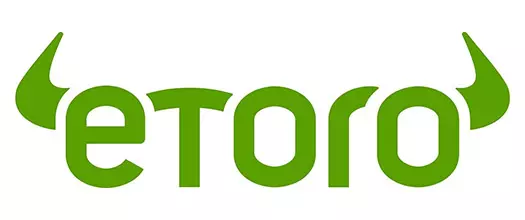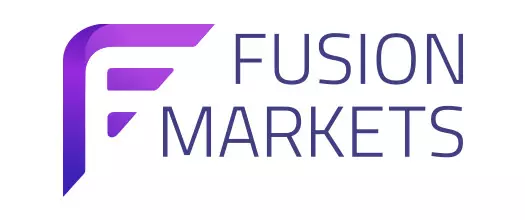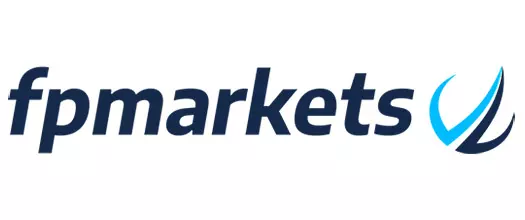- Jump to:
- Main features of the best Poland Forex brokers
- Forex Legislation
- Financial Regulators
- Payment Methods
- Trading Software
- Mobile Trading
- FAQ
Our team of expert traders tested many regulated and trustworthy forex brokers that accept traders from Poland and compiled a toplist with the best among them. Each broker operating in Poland received a quality score based on several factors, including Trustpilot rating, regulation, fees and commissions, available trading platforms, customer service and more.
 Plus500 USThis content applies only to Plus500 US and clients from the United States. Trading futures involves the risk of loss.
Plus500 USThis content applies only to Plus500 US and clients from the United States. Trading futures involves the risk of loss. eToro61% of retail investor accounts lose money
eToro61% of retail investor accounts lose money Fusion Markets74-89% of retail's CFD accounts lose money
Fusion Markets74-89% of retail's CFD accounts lose money FP Markets73.85% of retail investor accounts lose money
FP Markets73.85% of retail investor accounts lose money Global Prime74-89% of retail CFD accounts lose money
Global Prime74-89% of retail CFD accounts lose money Pepperstone75.5% of retail investor accounts lose money
Pepperstone75.5% of retail investor accounts lose money
Below you can find a comprehensive comparison table of forex brokers for traders in Poland. We rank them based on several factors including: regulation, spreads and commissions, Trustpilot rating, trading instruments, trading platforms, deposit and withdrawal methods.
Our team has thoroughly evaluated all brokers listed below using TradingPedia’s exclusive methodology.
Main features of the best Poland Forex brokers
- Brand
- Trading platforms
- Minimum deposit
- Regulations
- Trading instruments
- Spreads
- Leverage for Forex CFDs
- Leverage for Crypto CFDs
- Leverage for Indices CFDs
- Deposit methods
- Withdrawal Methods
- Commission per Lot
- Contact details
Poland, the birthplace of the delicious pierogi, is a Central European country with a population of 37.7 million people and a gross domestic product of €524 billion, ranking in seventh place on the list of Europe’s biggest economies.
Its capital Warsaw is home to the Warsaw Stock Exchange whose history dates as far back as 1817. The country witnessed considerable economic growth after it transitioned to democracy following the fall of the Soviet Union in the late 1980s.
Both production and gross domestic product grew significantly in the years to follow, with Poland registering an average GDP growth rate of approximately 4% between 1990 and 2000. Today, Poland boasts a diverse economy with well-developed service, industry, and agriculture sectors. The country is one of the largest producers of crops like potatoes, wheat, rye, and sugar beets on a global scale.
Poland reorganized its banking industry after the Soviet Union dissolved. The previously state-owned National Bank of Poland became an independent central financial entity, mandated with the task of regulating the Polish banking sector and the local currency, the Polish Zloty (PLN). The end of the communist era had a great impact on Poland’s trading sector as well.
Currently, the country has strong trading partners in the face of other major European economies such as Germany, the Czech Republic, the UK, France, Italy, and the Netherlands. The biggest and oldest index on the Warsaw Stock Exchange is the Warszawski Indeks Giełdowy (WIG) which comprises 318 major companies.
Given the favorable economic climate in the country, it is only understandable that Poles are becoming increasingly interested in earning a little extra on the side by trading on the Forex markets. The PLN is the 22nd most traded currency in the world as of 2016, accounting for 0.7% of the overall foreign exchange turnover during this year.
The country has a mature Forex sector, regulated by the local watchdog the Polish Financial Supervision Authority (Komisja Nadzoru Finanswego in the native language). Poles have a broad variety of licensed brokerages to choose from where they can trade currency pairs, commodities, indices, and stocks, among other financial instruments.
Poland Forex Legislation
Trading on the Forex markets is fully legal on Polish soil. Brokerage firms looking to legitimately service local traders can do so as long as they receive a license from the Polish Financial Supervision Authority (PFSA). Certain conditions should be met during the process of license application.
Applicants must provide all the necessary documentation, including a list of shareholders and subsidiaries, information about the members of the board of directors along with their qualifications, and the minimum substantial capital the companies have. The registrants also need to establish a local branch in Poland.
Needless to say, this stable regulatory framework works to the benefits of local traders. It protects them and guarantees them fair trading conditions. Poland is also a member of the European Union and as such, it chose to unify some of its capital market rules with those in other EU countries under the regulations of the Markets in Financial Instruments Directive (MiFID).
The MiFID grants brokers licensed in the EU the right to service customers from all other member states. Of course, this legislation gives individual members the right to manage their own Forex legislation but they still have to remain compliant with the EU rules and directives.
Some brokers choose to obtain their licenses from the PFSA to benefit from tax exemption and the low licensing and workforce costs. It is a priority of the Polish regulator to ensure a safe, transparent, and fair trading environment for local retail traders.
The watchdog capped the maximum leverage for complex derivatives to 1:100 with a margin of 1% back in the summer of 2015 after careful evaluations of the conduct of major brokerages. The measure was taken after the watchdog found out over 81% of Polish retail customers lost their accounts’ balance and cited excessive leverage as the primary cause.
The leverage measures became tighter in an attempt to deal with the increasing number of Poles who incurred losses when trading on margin. The new caps differ for traders of different experience levels. Seasoned retail customers are now allowed to trade Forex with leverage of no more than 1:100 for specific instruments.
Customers can be reclassified as “experienced retail traders” as long as they provide proof they have handled at least forty major transactions on various instruments within the last two years. The CFD transactions should have a nominal value of no less than €50,000 each, or the equivalent amount in the local currency PLN. Ten such transfers are required per quarter.
The retail customer is expected to possess a sound knowledge of how derivatives work and provide a relevant certificate to back it up. The 1:100 leverage with a 1% margin of the CFDs’ nominal value applies to base instruments like currency pairs, major stock indices like Dow Jones and NASDAQ, and gold.
The PFSA introduced these measures despite facing heavy criticism on behalf of ESMA, which recommends leverage caps of no more than 1:30 in Europe. The EU regulator argued that the new leverage ratio is hugely disproportionate to the rates allowed in other member states.
The Polish watchdog was unimpressed with the reproval. The regulator backed its decision to boost the caps with the explanation it sought to prevent local traders from registering at offshore websites that operate without the necessary PFSA authorization. Leverage is usually significantly higher there, reaching 1:500 in some cases.
Meanwhile, retail investors who cannot be reclassified as experienced will have to deal with a leverage ratio of no more than 1:50. The Polish authorities previously planned a cap of 1:25 with a 4% margin for inexperienced traders but later dismissed this idea.
The PFSA argues that the higher leverage for certain classes of investors is not necessarily as bad as ESMA says. Besides, the Polish regulator demands that brokerages publish quarterly reports with their customers’ results when trading CFDs. Brokers found in violation of the new rules are subject to monetary penalties of PLN 5 million each.
Poland Financial Regulators
The main overseer of the financial sector in the Land of Fields is the Polish Financial Supervision Authority (PFSA). Along with Forex brokers, this entity supervises the capital markets, banking institutions, pension schemes, and insurance companies.
The watchdog came to life in the fall of 2006 as a result of the enforcement of the Financial Market Supervision Act adopted earlier the same year. In effect, it replaced the previous financial regulators, the Insurance and Pension Funds Supervisory Commission and the Securities and Exchange Commission of Poland. The two were abolished under the same piece of legislation that led to the establishment of the PFSA.
To operate in Poland, brokers must first receive authorization from this regulator and register in the country. This rule aims at halting the activities of overseas companies that provide investment services without having a local registered brand.
The safety of Polish investors is among the main priorities of this rigorous watchdog. The latter has adopted a proactive approach toward restricting Poles from trading on unauthorized foreign platforms. Traffic filtering is in place to prevent access to such brokerages. Telecommunication companies are required to identify and report unlicensed brokers to the Polish authorities.
The PFSA is among the latest European regulators to enforce a permanent ban on trading with binary options. The measure was introduced in July 2019 and disallows the advertising, distribution, and sale of these complex derivatives to retail customers based in the country. According to the regulator, these speculative products are way too volatile for retail investors to trade with. Such activities are closer to gambling than investing, the watchdog argues.
Poland Forex Payment Methods
Many renowned brokers provide Poles with the option to open accounts in PLN as their base currency, sparing them from having to pay extra for conversion. Prospective customers can give the platforms a test drive by setting up demo accounts. Those, who feel ready to commit with real money can register live accounts and fund them with one of the numerous supported payment methods.
Domestic bank transfers in PLN are among the most widespread solutions, albeit not the quickest ones, with a share of up to 90% of the Polish e-commerce market. They may take several hours to several business days depending on the policies of the specific broker.
International bank transfers are even slower, requiring three to five business days to process. On a positive note, some of the biggest brokers on the Polish market have chosen to lift the extra fees for both domestic and international bank transfers.
Debit and credit cards are commonly available across Poland-friendly trading sites, with some of the most popular brands being Visa, Maestro, JCB, and Mastercard. Card payments are usually instantaneous and work for both deposits and withdrawals. Many brokers do not charge fees for card transactions although your credit card provider might bill you additionally.
E-wallets like Skrill, Neteller, and PayPal are yet another suitable alternative for traders who deposit from Poland. The largest Forex trading providers offer locally available payment solutions, such as the Polish Przelewy24.
This system enables local traders to transfer money to brokers directly from their online bank accounts. For the purpose, the payee needs to be a customer of one of the 324 associated Polish banks and sign up for its online banking services.
Other methods suitable for depositors from the Land of Fields include PayU and Dotpay. Dotpay is associated with over 30 local banks. It allows Poles to process payments via credit cards or electronic transfers. The customer simply needs to select their bank from the list, fill out the requested information, and confirm the payment after the system redirects them to a new window.
PayU is another locally available method whose intuitive panel makes it incredibly easy to use. Payments through the PayU system can be conveniently conducted via different options including credit cards, bank and cash transfers. Once the money transfer goes through, Polish traders would receive an email confirmation.
Popular Trading Software in Poland
All good Poland-friendly brokers offer trading in currency pairs, commodities, exchange-traded funds (ETFs), shares, options, and indices via sophisticated platforms that facilitate customers’ ease of use. Polish traders commonly have access to MetaTrader 4 (MT4) by MetaQuotes which crushes all other platforms when it comes to popularity and distribution.
Released back in 2005, MT4 is beginning to show its age but this does not prevent Poles from choosing it over newer trading platforms. It is particularly popular among retail foreign exchange traders. This is completely understandable considering how intuitive its layout is. Professional Forex investors are also quite keen on MT4 because it comes with a host of neat tools for market analysis and chartization.
With that in mind, you should consider choosing a broker that uses the platform’s newer version, MetaTrader 5 (MT5) if you plan to expand your trading portfolio. MT5 offers support for several additional financial instruments.
Apart from Forex, it allows you to trade with options, stocks, bonds, futures, and indices. This newer version is even more loaded with useful tools and features. It has more timeframes, analytical objects, pending order types, symbols, and technical indicators.
Both netting and hedging are possible here. This is not the case with its predecessor MT4 where only hedging is available. Last but not least, both MT4 and MT5 support the Polish language to the benefit of traders from this market who are not fluent enough in English. Either version has its own dedicated mobile apps for Android and iOS.
Some Poland-friendly brokers cater to their customers with multiple trading platforms. Some of the most broadly available alternatives include cTrader, ZuluTrade, Sirix, and ActTrader although there are also brokers that build their software in-house.
Mobile Trading in Poland
Mobile devices have become an absolute necessity for people from Poland who use them for all kinds of on-the-fly activities, including staying in touch with friends and family, doing business, emailing, browsing, making purchases, and socializing. An increasing number of Poles also rely on them to execute trades while away from home.
But how come mobile trading is gaining such traction among residents of the country? The ability to quickly react to market price fluctuations is beneficial, even crucial, for all foreign exchange traders, especially those who deal with major currency pairs where prices can change in a millisecond.
Forex investors from Poland can monitor the markets at all times no matter where they are via native iOS and Android applications. Poland-friendly brokers pour tons of effort into crafting highly functional dedicated apps that closely mimic the desktop experience. You basically get to enjoy the same features and tools like those offered by the brokerages’ desktop platforms.
You can now actively manage both your account and portfolio without being confined to your desktop computer. Trading on the go is so popular that some of the start-up brokers even begin their operations with mobile-friendly apps before they launch a desktop website.
The best companies on the Polish market focus on developing apps that not only facilitate placing orders but also enable users to improve their trading strategies and knowledge. Today’s traders in Poland have all the analysis and learning tools at their fingertips, along with real-time quotes.









